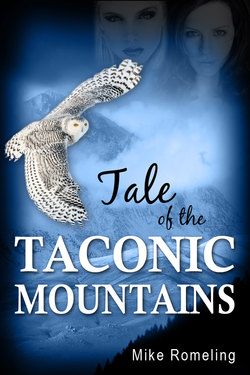Читать книгу Tale of the Taconic Mountains - Mike M.D. Romeling - Страница 6
На сайте Литреса книга снята с продажи.
The Taconic Mountains
ОглавлениеMany of those who dwell in the Taconic mountains consider themselves lucky that they are surrounded by larger and better known ranges. The Adirondacks to the north and the Catskills to the southeast absorb a big chunk of the tourists looking to “get away from it all.” The Berkshires and the Greens run along side the Taconics to the East and attract most of the rest. Many tourists travel through the Taconics on their way to these other mountains and don’t even realize they are traveling through a separate range. Even on the topographical maps, the Taconics, the Greens, and the Berkshires look like one continuous highlands, more or less separating the Hudson and the Connecticut river valleys.
Many of these travelers will find themselves on Route 22, a wonderfully scenic ribbon of a road that shows off the Taconics and the Greens like a proud lover. Along the border between Vermont and New York flows the Battenkill River, strangely well-preserved and seemingly oblivious to time and the sad polluted fate of so many other American rivers. Its sparkling waters are legendary among fly fishermen and most of the old dams that once existed are broken down and provide lively rips and rapids for delighted canoeists.
Further along into New York State, the travelers will find themselves passing into Shaker country, and indeed may be on their way to visit either of the two museums nearby that preserve much of Shaker history. This strange sect remains intriguing both for its adherents’ simple celibate lives that led to their eventual extinction, and for the fine craftsmanship and design of their furniture and other household items. The Shakers also led the way in identifying and producing herbal medicines, used both for themselves and to sell to the public.
Indeed, the Taconic region is alive with history. The Mohican Indians fiercely defended this land against the invading Mohawk Tribe. Although history records how the Mohawks drove them from these lands for a while, it is less often mentioned that in the end, the Mohicans won them back, neither side knowing how little time was left for either of them in the often heartless and fast changing world of the migrating white man.
Later the region became the object of a contentious border dispute between Massachusetts and New York. Massachusetts quite reasonably believed the Hudson River should be the boundary as indeed major rivers often are between states. But New York fought stubbornly to keep these lands east of the river. The Dutch had awarded these huge tracts of land to immensely rich families such as the Van Rensselaers and the Livingstons who rented them out to tenants barely able to make ends meet in these rocky hills and mountains that were never kind to those who have tried to farm. In the middle of the Nineteenth Century, some of these tenants organized and rebelled in the famous Rent Wars that are still celebrated each year in the tiny town of Hoags Corners in New York State. Earlier, during the Revolutionary War, British general John Burgoyne sent a foraging expedition into the Taconics only to see the party attacked and decimated by Colonel John Stark and his men who were so much better acquainted with the rugged terrain. This became known as the Battle of Bennington, even though it was actually fought primarily in New York State, in and around Wallonsac. The resulting lack of supplies for the British contributed greatly to Burgoyne’s defeat at the Battle of Saratoga— a pivotal battle in the war.
Yet rich in history as the region most certainly is, its pre-history is even more unique, for everything else about the Taconic Mountains pales before their very antiquity. The casual traveler down Route 22 does not know that he sojourns through one of the three oldest mountain ranges remaining on earth. The geologist, Yngvar Isachsen, calls them the Ancestral Taconic Mountains, and for good reason because it was at least four hundred and thirty-five million years ago, when a great arc of volcanic islands collided with the North American Continent. The result of this ancient collision was the uplift of the Taconics, a great range of mountains stretching from Newfoundland to Alabama. This era of geologic time is known as the Ordovician Period, named after the Ordovices, a Celtic people from the British Isles who were never conquered by the Romans. Scientists estimate these mountains were originally far higher than the Rocky Mountains are today and perhaps even rose to the heights of the Himalayas. This event is known as the Taconic Orogeny and preceded by almost one hundred million years the Acadian Orogeny that raised the Appalachian Mountains, caused by the collision of the African Continent against North America. This later upheaval, and succeeding geological events, supplanted most of the Taconics except for the narrow range that remains in parts of New England today, along with the Rensselaer Plateau to the west with its myriad of small lakes. These attractive bodies of water are the last remains of ancient shallow seas that long ago periodically inundated the region.
The great age of the Taconic mountains may have been part of what inspired Thoreau to say, “It was such a country as we might see in dreams, with all the delights of paradise.”
